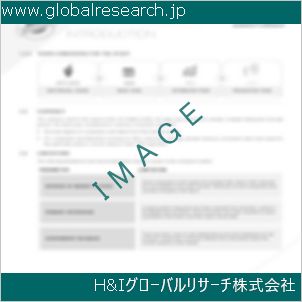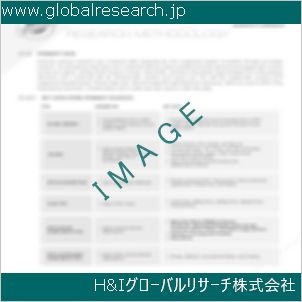Table of Contents
1 Industry Overview of Bariumfluoride
1.1 Definition and Specifications of Bariumfluoride
1.1.1 Definition of Bariumfluoride
1.1.2 Specifications of Bariumfluoride
1.2 Classification of Bariumfluoride
1.3 Applications of Bariumfluoride
1.3.1 Nuclear Application
1.3.2 Non-Nuclear Application
1.4 Industry Chain Structure of Bariumfluoride
1.5 Industry Overview and Major Regions Status of Bariumfluoride
1.5.1 Industry Overview of Bariumfluoride
1.5.2 Global Major Regions Status of Bariumfluoride
1.6 Industry Policy Analysis of Bariumfluoride
1.7 Industry News Analysis of Bariumfluoride
2 Manufacturing Cost Structure Analysis of Bariumfluoride
2.1 Raw Material Suppliers and Price Analysis of Bariumfluoride
2.2 Equipment Suppliers and Price Analysis of Bariumfluoride
2.3 Labor Cost Analysis of Bariumfluoride
2.4 Other Costs Analysis of Bariumfluoride
2.5 Manufacturing Cost Structure Analysis of Bariumfluoride
2.6 Manufacturing Process Analysis of Bariumfluoride
3 Technical Data and Manufacturing Plants Analysis of Bariumfluoride
3.1 Capacity and Commercial Production Date of Global Bariumfluoride Major Manufacturers in 2023
3.2 Manufacturing Plants Distribution of Global Bariumfluoride Major Manufacturers in 2023
3.3 R&D Status and Technology Source of Global Bariumfluoride Major Manufacturers in 2023
3.4 Raw Materials Sources Analysis of Global Bariumfluoride Major Manufacturers in 2023
4 Capacity, Production and Revenue Analysis of Bariumfluoride by Regions, Types and Manufacturers
4.1 Global Capacity, Production and Revenue of Bariumfluoride by Regions 2019-2024
4.2 Global and Major Regions Capacity, Production, Revenue and Growth Rate of Bariumfluoride 2019-2024
4.3 Global Capacity, Production and Revenue of Bariumfluoride by Types 2019-2024
4.4 Global Capacity, Production and Revenue of Bariumfluoride by Manufacturers 2019-2024
5 Price, Cost, Gross and Gross Margin Analysis of Bariumfluoride by Regions, Types and Manufacturers
5.1 Price, Cost, Gross and Gross Margin Analysis of Bariumfluoride by Regions 2019-2024
5.2 Price, Cost, Gross and Gross Margin Analysis of Bariumfluoride by Types 2019-2024
5.3 Price, Cost, Gross and Gross Margin Analysis of Bariumfluoride by Manufacturers 2019-2024
6 Consumption Volume, Consumption Value and Sale Price Analysis of Bariumfluoride by Regions, Types and Applications
6.1 Global Consumption Volume and Consumption Value of Bariumfluoride by Regions 2019-2024
6.2 Global and Major Regions Consumption Volume, Consumption Value and Growth Rate of Bariumfluoride 2019-2024
6.3 Global Consumption Volume and Consumption Value of Bariumfluoride by Types 2019-2024
6.4 Global Consumption Volume and Consumption Value of Bariumfluoride by Applications 2019-2024
6.5 Sale Price of Bariumfluoride by Regions 2019-2024
6.6 Sale Price of Bariumfluoride by Types 2019-2024
6.7 Sale Price of Bariumfluoride by Applications 2019-2024
6.8 Market Share Analysis of Bariumfluoride by Different Sale Price Levels
7 Supply, Import, Export and Consumption Analysis of Bariumfluoride
7.1 Supply, Consumption and Gap of Bariumfluoride 2019-2024
7.2 Global Capacity, Production, Price, Cost, Revenue, Supply, Import, Export and Consumption of Bariumfluoride 2019-2024
7.3 USA Capacity, Production, Price, Cost, Revenue, Supply, Import, Export and Consumption of Bariumfluoride 2019-2024
7.4 EU Capacity, Production, Price, Cost, Revenue, Supply, Import, Export and Consumption of Bariumfluoride 2019-2024
7.5 China Capacity, Production, Price, Cost, Revenue, Supply, Import, Export and Consumption of Bariumfluoride 2019-2024
7.6 Japan Capacity, Production, Price, Cost, Revenue, Supply, Import, Export and Consumption of Bariumfluoride 2019-2024
8 Major Manufacturers Analysis of Bariumfluoride
8.1 Manufacturer One
8.1.1 Company Profile
8.1.2 Product Picture and Specifications
8.1.2.1 Type I
8.1.2.2 Type II
8.1.2.3 Type III
8.1.3 Capacity, Production, Price, Cost, Gross and Revenue
8.1.4 Contact Information
8.2 Manufacturer Two
8.2.1 Company Profile
8.2.2 Product Picture and Specifications
8.2.2.1 Type I
8.2.2.2 Type II
8.2.2.3 Type III
8.2.3 Capacity, Production, Price, Cost, Gross and Revenue
8.2.4 Contact Information
8.3 Manufacturer Three
8.3.1 Company Profile
8.3.2 Product Picture and Specifications
8.3.2.1 Type I
8.3.2.2 Type II
8.3.2.3 Type III
8.3.3 Capacity, Production, Price, Cost, Gross and Revenue
8.3.4 Contact Information
8.4 Manufacturer Four
8.4.1 Company Profile
8.4.2 Product Picture and Specifications
8.4.2.1 Type I
8.4.2.2 Type II
8.4.2.3 Type III
8.4.3 Capacity, Production, Price, Cost, Gross and Revenue
8.4.4 Contact Information
8.5 Manufacturer Five
8.5.1 Company Profile
8.5.2 Product Picture and Specifications
8.5.2.1 Type I
8.5.2.2 Type II
8.5.2.3 Type III
8.5.3 Capacity, Production, Price, Cost, Gross and Revenue
8.5.4 Contact Information
…
9 Marketing Trader or Distributor Analysis of Bariumfluoride
9.1 Marketing Channels Status of Bariumfluoride
9.2 Traders or Distributors with Contact Information of Bariumfluoride by Regions
9.3 Ex-work Price, Channel Price and End Buyer Price Analysis of Bariumfluoride
9.4 Regional Import, Export and Trade Analysis of Bariumfluoride
10 Industry Chain Analysis of Bariumfluoride
10.1 Upstream Major Raw Materials Suppliers Analysis of Bariumfluoride
10.1.1 Major Raw Materials Suppliers with Contact Information Analysis of Bariumfluoride
10.1.2 Major Raw Materials Suppliers with Supply Volume Analysis of Bariumfluoride by Regions
10.2 Upstream Major Equipment Suppliers Analysis of Bariumfluoride
10.2.1 Major Equipment Suppliers with Contact Information Analysis of Bariumfluoride
10.2.2 Major Equipment Suppliers with Product Pictures Analysis of Bariumfluoride by Regions
10.3 Downstream Major Consumers Analysis of Bariumfluoride
10.3.1 Major Consumers with Contact Information Analysis of Bariumfluoride
10.3.2 Major Consumers with Consumption Volume Analysis of Bariumfluoride by Regions
10.4 Supply Chain Relationship Analysis of Bariumfluoride
11 Development Trend of Analysis of Bariumfluoride
11.1 Capacity, Production and Revenue Forecast of Bariumfluoride by Regions and Types
11.1.1 Global Capacity, Production and Revenue of Bariumfluoride by Regions 2024-2029
11.1.2 Global and Major Regions Capacity, Production, Revenue and Growth Rate of Bariumfluoride 2024-2029
11.1.3 Global Capacity, Production and Revenue of Bariumfluoride by Types 2024-2029
11.2 Consumption Volume and Consumption Value Forecast of Bariumfluoride by Regions, Types and Applications
11.2.1 Global Consumption Volume and Consumption Value of Bariumfluoride by Regions 2024-2029
11.2.2 Global and Major Regions Consumption Volume, Consumption Value and Growth Rate of Bariumfluoride 2024-2029
11.2.3 Global Consumption Volume and Consumption Value of Bariumfluoride by Types 2024-2029
11.2.4 Global Consumption Volume and Consumption Value of Bariumfluoride by Applications 2024-2029
11.3 Supply, Import, Export and Consumption Forecast of Bariumfluoride
11.3.1 Supply, Consumption and Gap of Bariumfluoride 2024-2029
11.3.2 Global Capacity, Production, Price, Cost, Revenue, Supply, Import, Export and Consumption of Bariumfluoride 2024-2029
11.3.3 USA Capacity, Production, Price, Cost, Revenue, Supply, Import, Export and Consumption of Bariumfluoride 2024-2029
11.3.4 EU Capacity, Production, Price, Cost, Revenue, Supply, Import, Export and Consumption of Bariumfluoride 2024-2029
11.3.5 China Capacity, Production, Price, Cost, Revenue, Supply, Import, Export and Consumption of Bariumfluoride 2024-2029
11.3.6 Japan Capacity, Production, Price, Cost, Revenue, Supply, Import, Export and Consumption of Bariumfluoride 2024-2029
12 New Project Investment Feasibility Analysis of Bariumfluoride
12.1 New Project SWOT Analysis of Bariumfluoride
12.2 New Project Investment Feasibility Analysis of Bariumfluoride
13 Conclusion of the Global Bariumfluoride (CAS 7787-32-8) Industry 2024 Market Research Report
| ※参考情報 フッ化バリウム(Barium fluoride、CAS番号7787-32-8)は、バリウムとフッ素からなる無機化合物で、化学式はBaF₂です。この化合物は、特有の物理的および化学的特性を持ち、多くの分野で利用されています。その特性や用途を理解することで、フッ化バリウムの重要性をより深く認識できるでしょう。 フッ化バリウムは、白色の結晶状の固体であり、無臭です。水にはほとんど溶けませんが、濃い酸やアルカリに対しては緩やかに溶解します。この化合物の融点は約1300℃であり、高い融点を持つため、高温環境下でも安定した物質として評価されています。さらに、フッ化バリウムは、優れた光学特性を持ち、特に紫外線や赤外線の透過性が高いことが特徴です。このため、フッ化バリウムは光学機器の材料として重宝されています。 フッ化バリウムには、いくつかの多結晶性の形態がありますが、最も一般的に用いられるのは立方晶系(キュービック結晶構造)です。この結晶構造は、その物質の安定性や特性に寄与しています。フッ化バリウムは、自然界にも存在し、いくつかの鉱物として見つかることがありますが、工業的には主に合成によって製造されます。 この化合物の用途は多岐にわたります。最も重要な用途の一つは、光学機器のレンズや窓材としての利用です。フッ化バリウムは、特に紫外線領域での透過率が高いため、紫外線分光法などにおいて、ビームパスを構成する材料として選ばれることが多いです。また、赤外線分光法でも、その優れた透過性が利用されます。さらに、高エネルギー物理学や粒子物理学の実験においては、フッ化バリウムを用いたシンチレーター(放射線検出器)の材料としても使用されます。 フッ化バリウムはまた、化学産業においても重要な役割を果たしています。例えば、セラミックやガラスの製造において、添加剤として使用されることがあります。これにより、材料の特性を向上させることが可能になります。さらに、電子機器や半導体産業でも、フッ化バリウムは絶縁体や充填材としての用途があります。 最近の研究では、フッ化バリウムはバイオメディカル分野においても注目されています。特に、その高い透過性や生体適合性から、医療用の放射線治療における新しい技術開発への応用が模索されています。これにより、より効果的な治療法の開発が期待されています。 また、フッ化バリウムは、その特性を利用した新しい材料への技術的な応用も進んでいます。例えば、ナノテクノロジーの分野では、フッ化バリウムを基にしたナノ粒子の製造が研究されており、これにより新しいセンサーやエネルギー変換デバイスの開発が期待されています。 フッ化バリウムの取り扱いに関しては、注意が必要です。フッ素化合物は一般に毒性があるため、取り扱いの際には防護具を着用し、適切な安全対策を講じることが重要です。また、環境への影響を考慮する必要があり、廃棄物管理やリサイクルの観点でも注意が求められます。 さらに、フッ化バリウムについての研究は今後ますます進むことでしょう。新しい用途の開発や、既存の技術の向上が期待され、さらなる発展が見込まれています。このように、フッ化バリウムはその特性と用途から、現代の科学技術において非常に重要な物質となっており、その利用範囲は今後も広がっていくでしょう。 |
❖ 免責事項 ❖
http://www.globalresearch.jp/disclaimer












